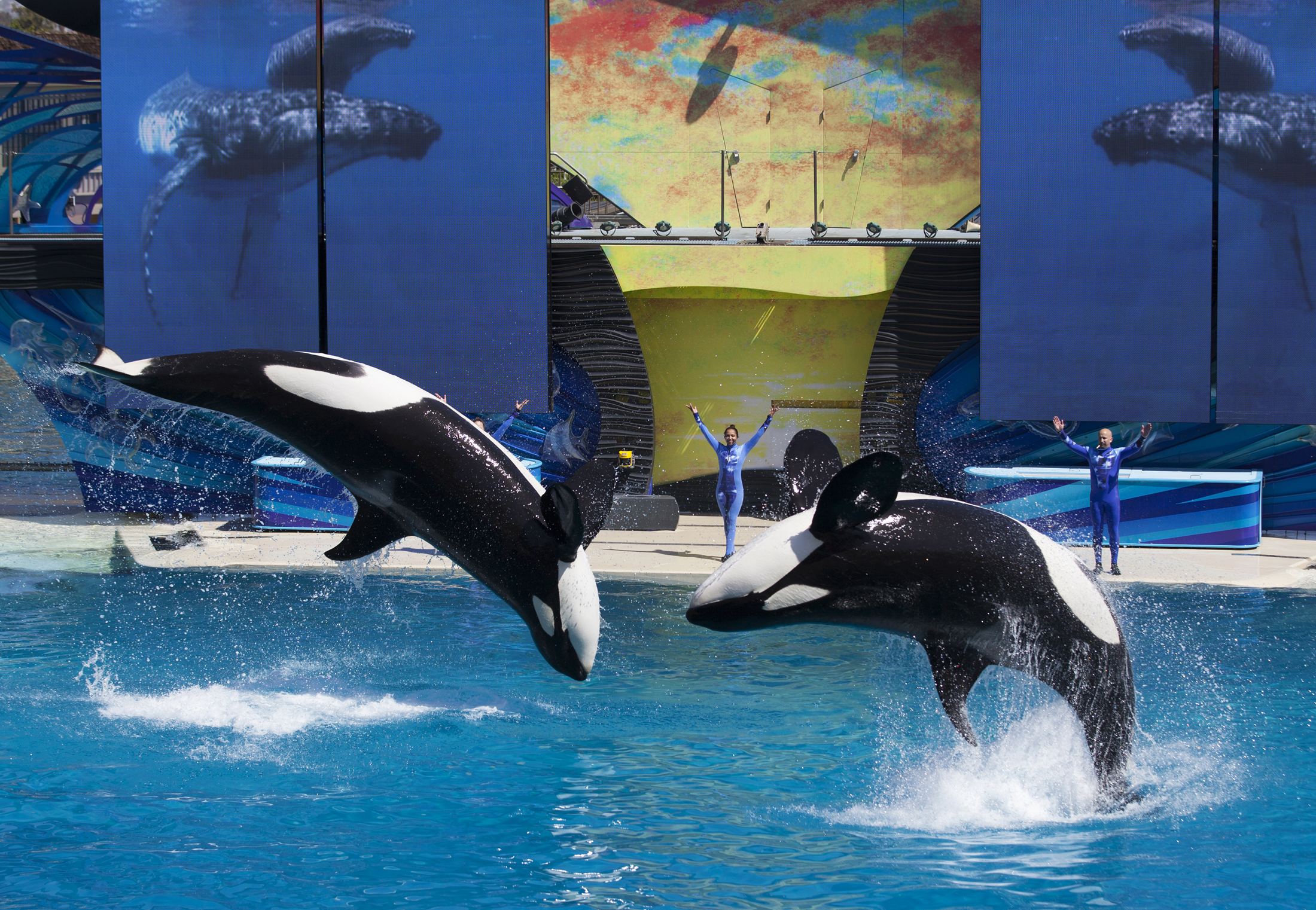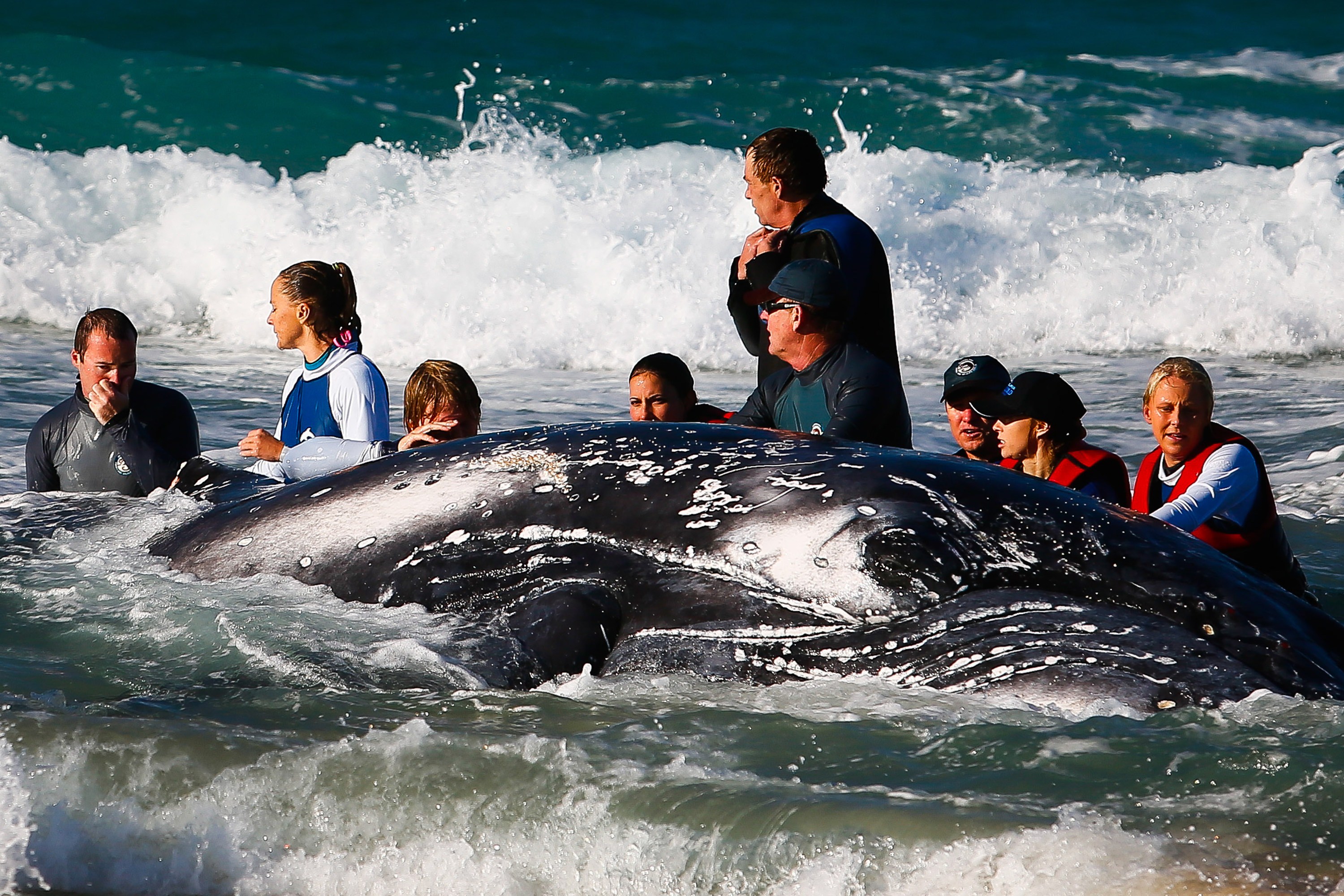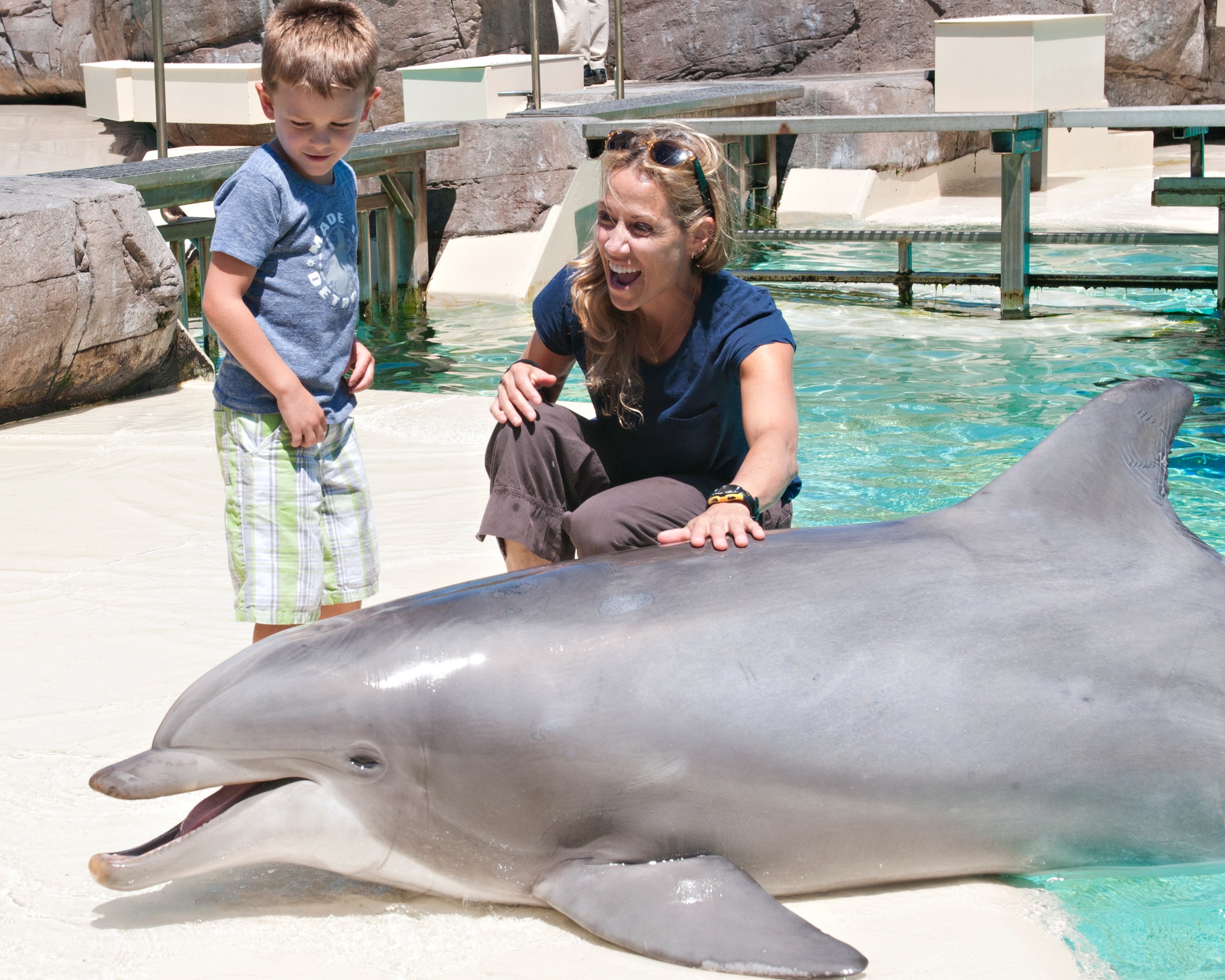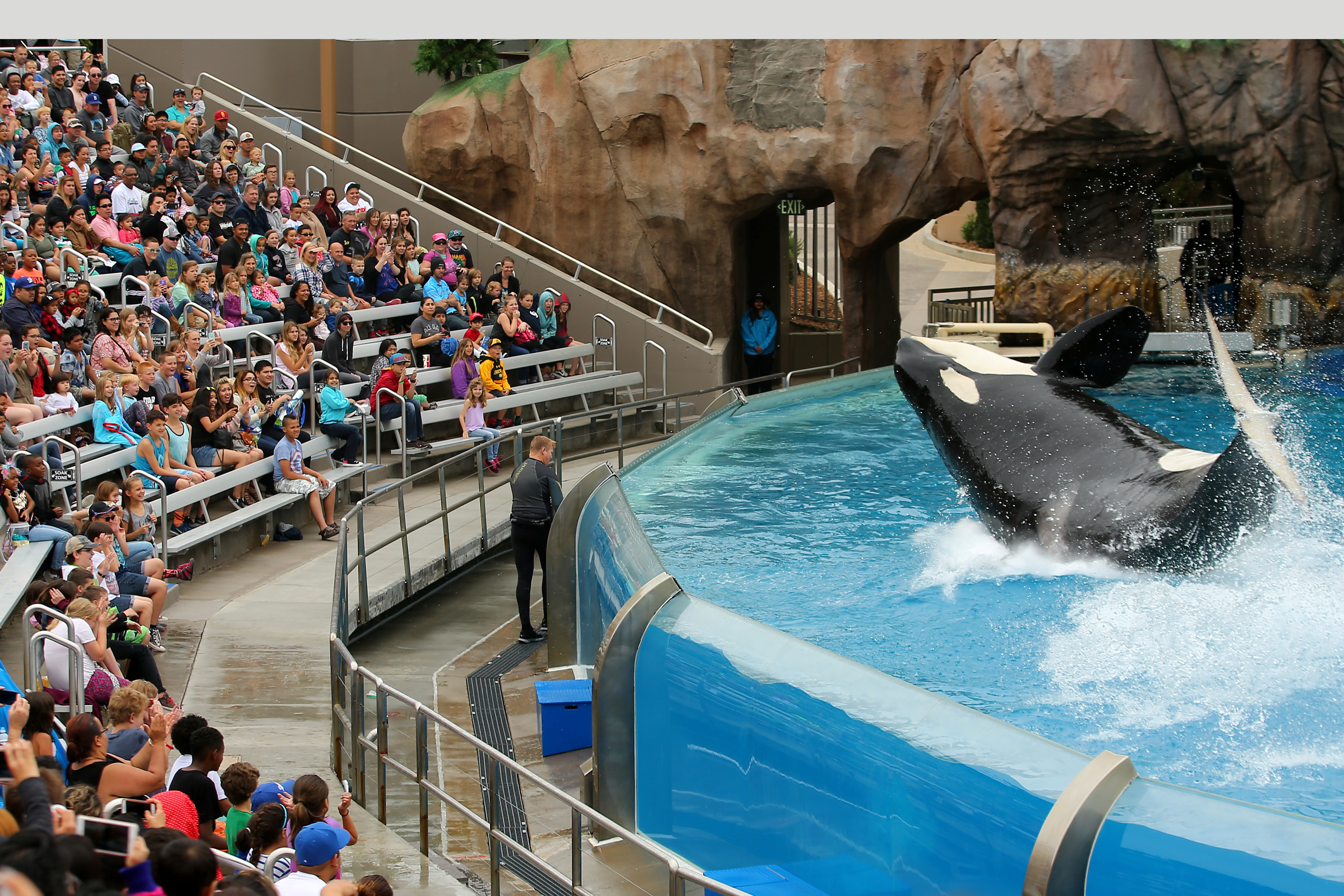SeaWorld has long been the subject of criticism for holding marine animals in captivity. However, some scientists are now speaking out in favor of marine animals at places like SeaWorld, particularly for their role in research critical to conservation.
People for the Ethical Treatment of Animals (PETA) claimed in June that rake marks on dolphins at SeaWorld demonstrate “unnatural behavior” produced from “ridiculous circus-style shows.”

Naked protesters from the People for the Ethical Treatment of Animals (PETA) painted to resemble orca whales protest outside Macy’s department store in New York, November 20, 2014. (REUTERS/Brendan McDermid)
But Dr. Kathleen Dudzinski, founder and director of the Dolphin Communication Project, disagrees with this conclusion. She studies dolphins both in the wild and in captivity. According to her, such rake marks are a normal part of dolphin socialization: “We see this everywhere we study them,” she told the Daily Caller.
“If they don’t have rake marks, we worry if they have been socializing enough,” Dr. Dudzinski said.
PETA’s complaints are the latest in a series of claims made by animal activists against SeaWorld. (RELATED: The Insanity Of PETA: Its Frivolous Lawsuit Against SeaWorld Compared Whales To Black Slaves)
But now, some scientists are speaking out against what they see as dishonest anti-captivity attacks that could curtail important research aimed at helping conservation efforts.
“Many field biologists (and other disciplines) are realizing they need to be more vocal in their support of the importance of human care populations and the data they provide,” Dr. Grey Stafford, director of conservation at the Wildlife World Zoo and Aquarium in Phoenix, Arizona and host of the podcast Zoo Logic, told the Daily Caller.

Trainers have Orca killer whales perform for the crowd during a show at the animal theme park SeaWorld in San Diego, California March 19, 2014. (REUTERS/Mike Blake)
Dr. Stafford explained scientists are more vocal now about the value of animals in captivity due to “recent anti-cap[tivity] attacks and legislative actions.” For example, there has been recent pushback against killer whale breeding and there was a ban on the captivity of dolphins and whales in Canada earlier this year.
SeaWorld announced in 2016 it would end its orca breeding program after the California Coastal Commission ruled SeaWorld in San Diego could only expand if they banned captive breeding. The 2013 film Blackfish regarding SeaWorld’s treatment of orcas, which SeaWorld alleges is inaccurate and misleading, has also had a significant impact on the company.
Some scientists told the Daily Caller that marine animals in captivity provide research unavailable in wild populations.
Captive populations have informed “all that we know” about physiology, reproduction, behavior, communication and socialization, Dr. Jason Bruck, editorial board member for the journal Animal Behavior and Cognition, told the Daily Caller
Conserving populations in the wild would be “much more difficult” without research of captive populations, according to Heather Hill, Professor of Psychology at St. Mary’s University and marine mammal researcher.
Dr. Stafford said the controlled environment and repetition found only in human care environments are necessary to conservation research.

Sea World marine rescuer workers try to rescue a humpback whale beached at Palm Beach on Queensland’s Gold Coast on July 9, 2014. (PATRICK HAMILTON/AFP/Getty Images)
Research of marine animals in captivity has taught scientists how to triage mass strandings, provide antibiotics to emaciated whales, understand why animals are dying in record numbers along the Gulf coast, and set better guidelines regarding ship traffic and sonar, scientists told the Daily Caller.
The rescues of Tyonek, the stranded Cook Inlet beluga calf, and the rescue of a whale mother and calf in the San Diego Bay were used by scientists as examples of this research in action. SeaWorld has rescued or helped more than 33,000 animals due in part to the research by their scientists.
PETA disagreed, however, telling the Daily Caller, “Research conducted on animals held in captivity doesn’t help them in the wild or conserve their numbers in any way.”
Animal rights activists spend millions of dollars in their mission to end all captivity of marine animals. For example, the Humane Society of the United States collected $176 million dollars in revenue in 2018, a portion of which was used to lobby against marine animal captivity.

Singer/songwriter Sheryl Crow makes a new friend in Steime, a 22-year-old bottlenose dolphin, at SeaWorld San Diego on July 26, 2012 in San Diego, California. (Mike Aguilera/SeaWorld San Diego via Getty Images)
Dr. Stafford told the Daily Caller “far more money” is available to scientists who work for animal rights organizations than to scientists who do research. He said these scientists “do little to zero actual research but work full time to push their anti-cap[tivity] agenda.”
“They often tend to ignore more recent data/peer-reviewed publications that don’t support their views,” Dr. Stafford said of scientists who work for animal rights organizations to lobby against marine life in human care.
A frequent talking point of animal rights organizations is that marine animals in captivity have shortened life spans. PETA, for example, told the Daily Caller: “Captive orcas rarely approach the average life expectancy of wild orcas.”
Lifespans of dolphins and orcas in captivity are not lower than in the wild, and are in fact “comparable,” according to Dr. Hill. She noted scientists have a limited understanding of orca lifespans in the wild. Study after peer-reviewed study has drawn the same conclusion as Hill.

SeaWorld unveils its new Orca Encounter show in San Diego, California, U.S., May 31, 2017. (REUTERS/Mike Blake)
Alec Baldwin recently made a public stance opposing trainers using dolphins as “surfboards” in shows.
Dr. Dudzinski, however, explained to the Daily Caller this practice is not harmful to animals based on her understanding of dolphin anatomy and behavior. She explained dolphins choose to do shows and appear to enjoy them and noted there are times when dolphins choose not to participate and the show is canceled or shortened.
Actress Pamela Anderson posed in a bathtub in a PETA ad in June beneath the words “Could You Live in a Bathtub for Decades?” in an effort to gain freedom for an orca named Corky. This is part of frequent assertions by animal rights activists that tanks for orcas and dolphins are too small.

Actress Pamela Anderson poses for PETA in a campaign against the captivity of orcas. (Peta/Youtube)
Dr. Hill told the Daily Caller that orcas have enough room at SeaWorld based on her direct observations of SeaWorld in San Antonio and “limited direct observations” of the two other SeaWorld parks. Dr. Stafford agreed the tanks are large enough based on the normal species-specific behavior exhibited by the animals in captivity.
“I have never observed anything that would lead me to think that marine animals are oppressed by captivity,” Dr. Bruck agreed.
Dr. Stafford pushed back against anti-captivity activism, saying, “The actual animals we should all be worried about are the ones swimming, struggling, and washing up dead or dying on our shores. Nature is in big trouble.”


